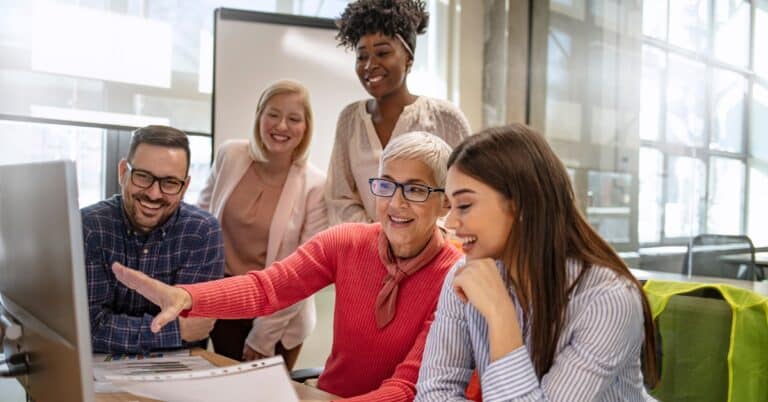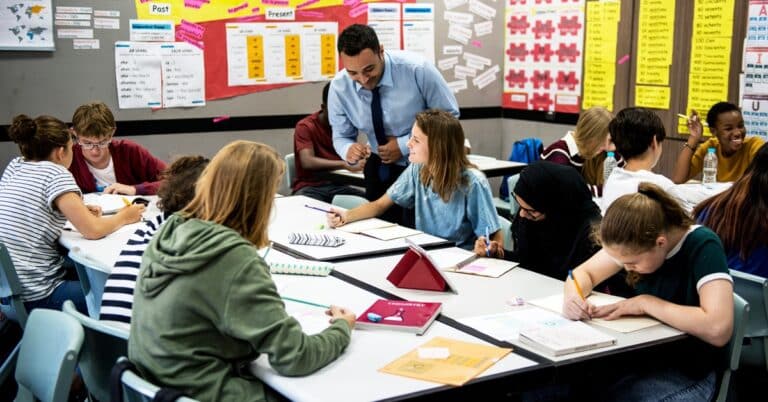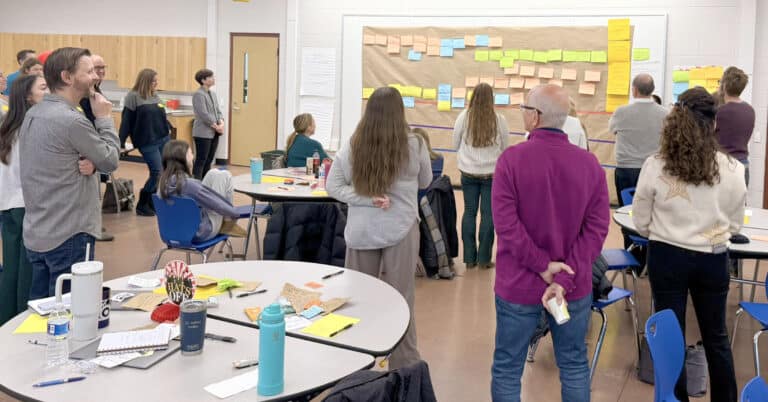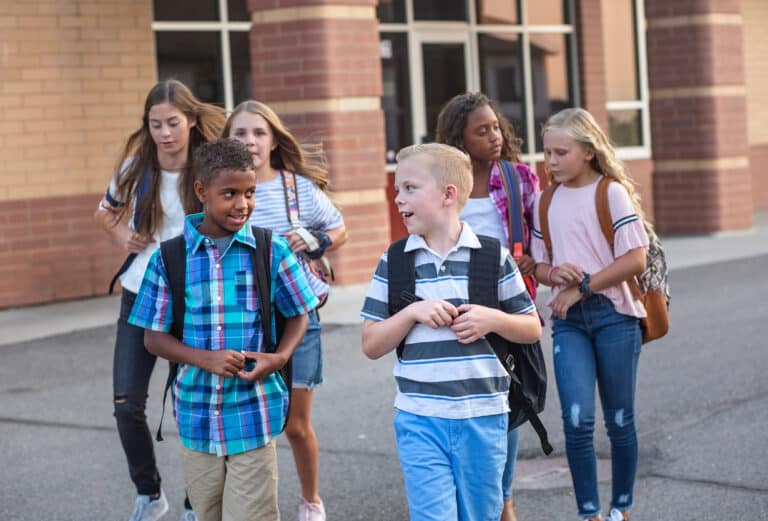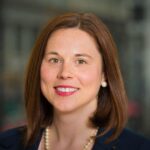Nevada is designing a Portrait of a Nevada Learner that can serve as a unifying measure for the state, and, according to State Superintendent Jhone Ebert, leverage the strengths of young people within Nevada to “drive the future and move us all forward.”
That’s why when 200 educators, students, community members and policymakers gathered in Las Vegas, Nevada in October of 2022 to collaborate and share their ideas about the future of teaching and learning in the state, their focus wasn’t the system.
It was students.

“We need to be thinking about learners differently, and how our system prepares learners not just for the test – but to be able to write the test,” said Alex Bybee, chief strategy advisor with Communities in Schools of Nevada. “The world that young people are moving into is changing at a rapid clip. In order to hold space for that chaos and to navigate the complexity of our present day and our future, learners need to be able to engage with others to source the knowledge needed. They need a different way of being.”
Supporting learners as leaders
“Our students have so many assets they bring: their languages, their culture, everything they bring to the table is phenomenal,” said Ebert. “Nevada is the third most diverse state in the country. We have the opportunity to take action now to lead the rest of the nation.”
More than 200 empathy interviews were conducted across the state in the spring of 2022 with a cross-section of stakeholders. Through these interviews, they hoped to uncover the values, hopes and experiences of Nevadans in regard to education. What they heard informed not just how the work would begin, but how it would carry on, beginning with the October gathering that was open to the public.

“The iterative process of developing a portrait represents a desire to build something together as a community,” said Jeanine Collins, chief innovation officer with ed.Xtraordinary. ed.Xtraordinary is partnering with the state to develop a Portrait of a Nevada Learner that will evolve Nevada’s education system to meet the needs of every learner. “A variety of conversations with young people, educators, caregivers and community leaders have resulted in over 1,400 inputs so far. When we ask our community about what they want for all learners, focusing on durable skills that build on academic knowledge is essential. They want students to know themselves, connect with others, contribute their skills to the community and thrive through life’s inevitable challenges.”
The draft portrait is a starting point to continue to evolve Nevada’s definition of educational success.
The Portrait of a Nevada Learner Process
Every child in Nevada deserves every opportunity to succeed in building the life they choose. We will continually explore the following questions to build on a shared vision for success:
- What is a good life and a thriving community?
- How can school help us get there?
- What are the next steps we can take to evolve education together?
Modeling an inclusive approach at the state level provides an example for how district administration can work with schools, how schools can work with educators in the classroom and how teachers can partner with students and families. It’s something that’s being done with schools or communities, not to them.
“You have to do the work with the people that are in it,” said Pam Teel, superintendent with Lincoln County School District. She spoke to her district’s approach to conducting a needs assessment with their learning community – made up of four distinct communities – and creating a learner profile. “I want this today; I wanted this yesterday. But you have to scale back and ensure that the communities you serve are in it with you. You have to build relationships with parents and stakeholders. It can’t be my work. It’s got to be the group’s work.”
Nevada leaders formed the Blue Ribbon Commission to help re-imagine an education system that is future-ready, resilient, equitable and student-centered.
Read more >>
“What we need is a lot of skills.”
After hearing from and reflecting on insights from a student panel, participants were asked to identify the skills and qualities they might expect and want to see in a Portrait of a Nevada Learner and to design their own. While academics played a role for all, there was a pronounced desire for school to mean more and do more.
“We know we can find a lot of content. What we need is a lot of skills. Durable skills,” said Summer Stephens, superintendent with Churchill County School District. Stephens participated in a panel discussion where several Nevada districts who have already designed and implemented a portrait shared what they’ve learned. In Stephens’ district, they identified six attributes they wanted each graduate to display and were intentional about seeing those attributes throughout each student’s learning journey. They then thought about the kinds of skills students would need to practice and master to meet those attributes.
“One of the concepts that came up a lot when we were designing was empathy,” said Stephens. “It was on a lot of folks’ hearts and minds. How does empathy play out in all our attributes? How is it a part of being a good communicator, or a lifelong learner?”
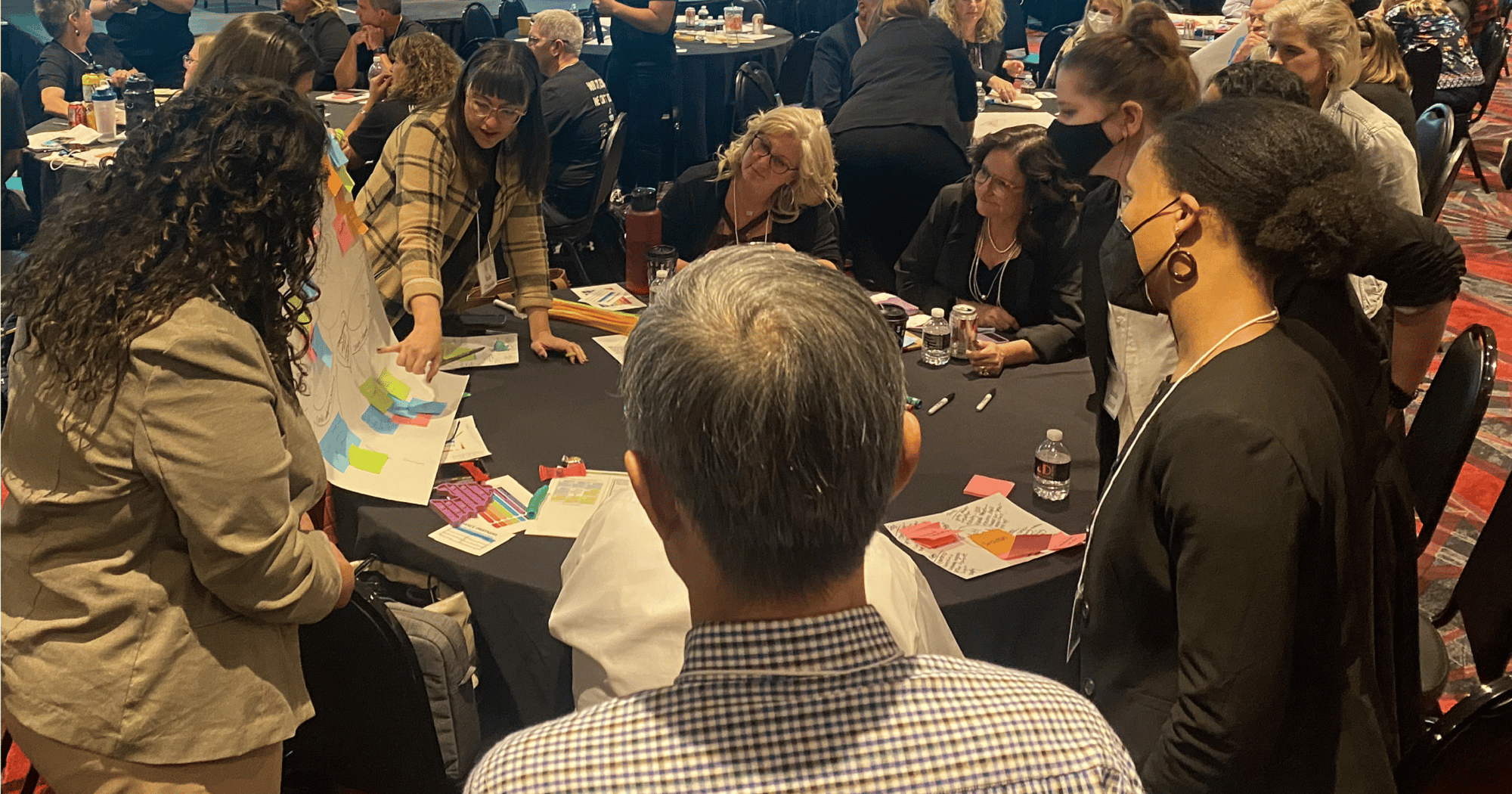
For Felicia Ortiz, president of the Nevada State Board of Education, she hopes that the statewide portrait will feel real and accessible, helping to define what teaching and learning can and should look like for the future.
“I want people to be able to say yes, this is what I want for my child, my neighbor’s kid, my niece or nephew,” said Ortiz. “The portrait will help us change the mindsets around education to be more than test scores or a diploma. It’s more than just ensuring a child passed a class because they’re supposed to, or because they’re seven years old. We’re educating the whole child. Not just English, math and science, but life skills, art, music – all the things that will make students not only want to come to school and be engaged but be a productive member of society in the future.”
Ortiz also sees the portrait as an opportunity to rethink assessment, and a necessary tool for redesigning it.
“What does it mean for a kid to prove that they’ve mastered a concept via a project instead of taking a test and getting a grade? Because that would help us,” Ortiz said, highlighting the concerns raised in Nevada learning communities regarding the amount of tests students must take and her efforts to share examples of different ways students are demonstrating learning in Nevada schools and districts. “In order to get away from testing but still be accountable, we have to prove that we’re teaching kids the skills and knowledge that they need in life.”
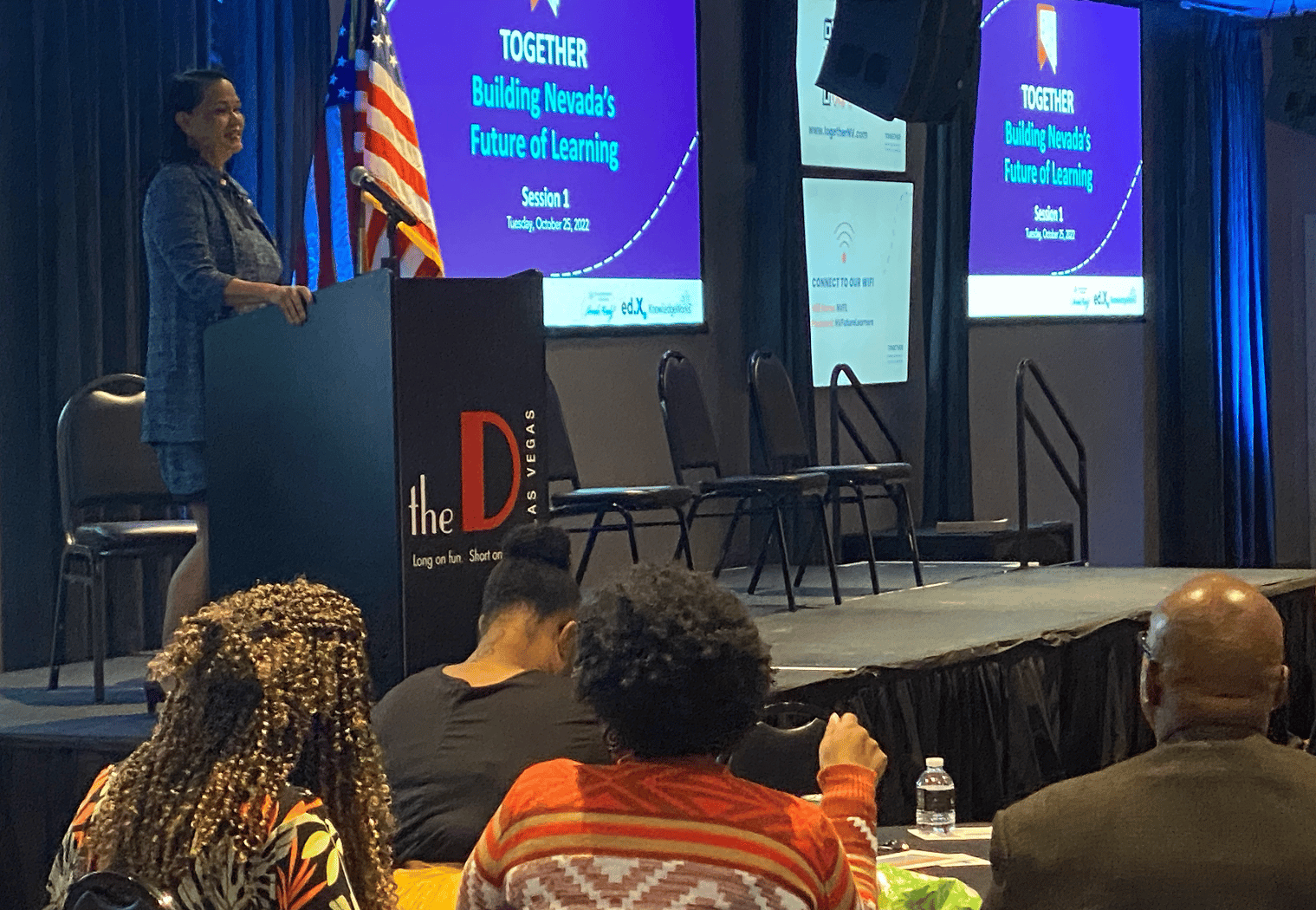
How Nevada educators can hold each other accountable – and share a purpose
“As a child, I wanted to become a teacher because I hated school. I wanted to be sure that every child was seen for who they were in that moment, because in the next moment, they might be different. But school doesn’t adapt,” said Stephens. When reflecting on the potential of a Portrait of a Nevada Learner to truly impact teaching and learning across the state, she is candid about what having this kind of accountability and shared purpose can do. “We’ve gotten out of sync with what’s important: people, what we need to be able to do. We can all look stuff up on our phones. Getting the Portrait of a Nevada Learner will help us refocus our energies on what matters, on what we should be tracking and designing for.”
Next steps for the design process are laid out clearly for those looking to engage with the draft portrait, including monthly conversations planned through June with a cross-sector of stakeholders across the state. According to the Nevada Department of Education, “the community will explore perspectives around essential elements of future-ready learning and invite deeper reflection on how the draft portrait can evolve.”
For Teel, the support of the state in this work cannot be understated.
“Every kid deserves some kind of pathway to success and if the state is supporting that, that’s huge. Serving not just my kid or their kid, but every kid,” said Teel, who, like Ortiz, recognizes the power of the Portrait of a Nevada Learner to be a tool for accountability – and not in the punitive way that rankings and scores have been in the past. “I’m not afraid of accountability. I want to be held more accountable that students leave the system with knowledge, with something they’re capable of doing.”
Reflecting on her hopes for the two days educators and stakeholders came together, Ebert described it as “the point of inflection.”
“This is the moment we start moving things forward,” said Ebert. “How do you change an entire state with 500,000 students and 50,000 educators and staff all with their own thoughts and opinions about educational needs? It’s going to take all of us working together to change our education system for the better.”
Every system, like every learner, is an individual. And they can learn a lot from each other. Here’s how one district in Arizona sought out the expertise of a district in North Dakota.
This was written by former Senior Manager of Communications Jillian Kuhlmann.
